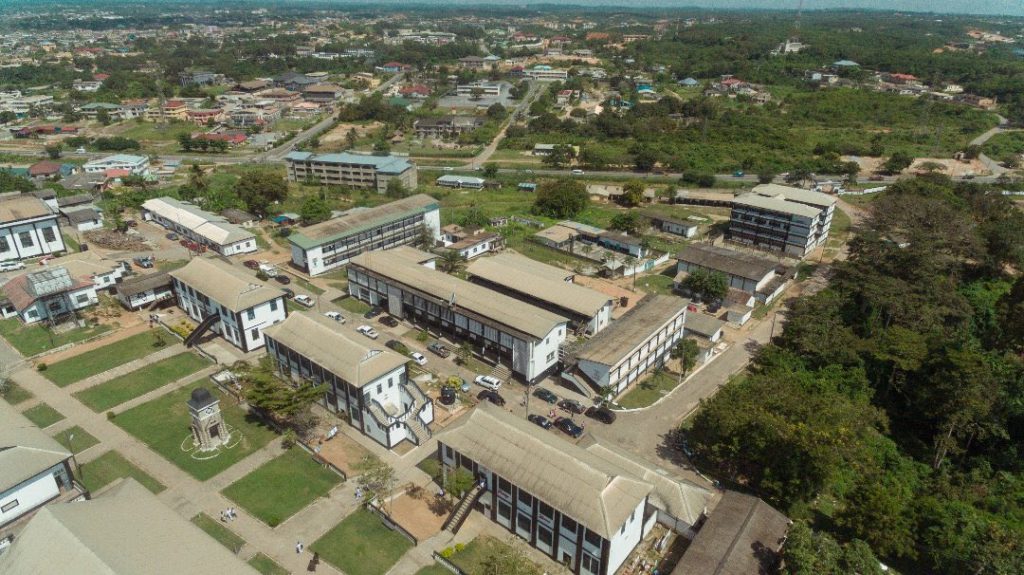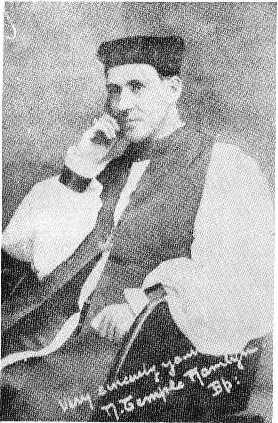Santaclausians
Both past and present are known as “Santaclausians”. This is because up until 1936 it was known as St. Nicholas’ (Santaclaus) Grammar School and the students as Santaclausians.
The Motto
The school’s motto is “Vel Primus Vel Cum Primis” which in Latin means “either the first or with the first.” It enjoins Santaclausians to strive to be among the best, if not the very best, in whatever they do.
School Uniform
The uniform of the school is black and white shirt on black shorts. It is commonly referred to as “zebra” due to the fact that the black and white are striped together like that of the zebra.
History of the school
Adisadel College is one of Ghana’s oldest modern educational institutions for boys in Africa and has produced prominent people in all socio-political and professional endeavours worldwide. It was founded January 1910 by the Society for the Propagation of the Gospel (SPG) and initially named the SPG Grammar School. The name of the school was however changed to St Nicholas Grammar School In 1924 after a change in leadership of the Anglican Church as well as an awareness for the school to be managed locally. The name finally changed to Adisadel College when it moved to its current location at Adisadel on the outskirts of Cape Coast in Ghana.
The School was established in 1910 in a storey building at Topp Yard, near Christ Church and the Castle, at Cape Coast. From a humble beginning with only twenty-nine boys, the School has grown over the past hundred years. When it was twenty-five years old in 1935 the School had about 200 boys on the registers. At the time of the Golden Jubilee in 1960 the enrolment had gone up to 545 and now there are nearly two thousand (2000) boys in residence in the school’s houses.
The Campus
The school campus spreads above and below a hill that is rich with tropical ecological preserves. The lower campus, known as Katanga is joined to the upper campus by a stairway that rises over 150 ft. The upper school known as Leopoldville is where the academic and administrative facilities are located. With the current student population of 2000, the school has grown and evolved from an institution that started as training boys for the Anglican priesthood.


Vision Of Father Hamlyn
The vision of its founder, Rev Nathaniel Templyn Hamlyn has yielded great success when one surveys the alumni of this school who have achieved greatness for their country and excelled in various endeavors. The beautiful campus of Adisadel College has facilities that are unique among secondary schools in Ghana. Among some of its facilities are a language laboratory (at one time used by the University of Cape Coast), a gymnasium, lecture halls, computer laboratory, library, sports stadium, an Infirmary and a chapel.
Dormitories or Houses
As a boarding school Adisadel College maintains ten houses which are the mainstay of its students life. Evenly distributed over both upper (Leopoldville) and lower (Katanga) campuses are houses whose historic roots define the self-reliant Adisadel spirit. All the old dormitory blocks at the upper school were built by students in 1924.
Enrolling students are given the choice of living in one of the ten dormitories that form the house. It is not unusual to find three generations of the same family having belonged to the same house. Each house has its unique character. Being the units of intramural campus competition, the Houses promote activities that enhance social bonding and group pride.
- School Ode
- Adisadel Victory Songs
- Houses
- 1st Verse
- 2nd Verse
- 3rd Verse
- 4th Verse
- 5th Verse
Up Santaclausians! stand up to honour
Those who have gilded the School with their fame;
Our Alma Mater - a blessing upon her!
Bids us remember the strength of her name.
Others have laboured and we share the glory,
Ours to do exploits and add to their gain;
Those who come after will take up our story,
May it be worthy of singing again.
Hamlyn and School House see him who founded
Firm his beginnings, enduring his pile;
His was the triumph of hardship surmounted,
Yours is the chance just to make it worth while.
Give of your best to the School his creation -
Work with your head and your hands and your heart;
Play up for House and for School and for Nation,
Cry "Una Mente"; let each do his part.
Phillip the patient, the Patron of Quaque,
Labour'd in love for Oguaa by the sea;
Let his example of faithfulness make you
Mighty in purpose and dogged as he.
This was a man and a priest and a hero -
He won the fight that go on not to the strong -
Let his endurance and fortitude nerve you
To war or to suffer for right against wrong.
Elliott the Old Boy, the first-fruits of Orders
Culled from the seed which our Founders have sown,
Food both for joy and inspiring affords us
Him as our pride and example we own;
Living for Christ's sake a slave to his charges
Working and watching while yet it is day;
The Kingdom of goodness its borders enlarges
Love and humility open the way.
Nicholas the saintly Bishop, our Patron,
Prays that his sons may be good men and true;
Hamlyn our Founder rests all his hopes on
You and the big things that you want to do.
Gird up your loins, let the watchword be "Forward",
Give of your best and the School you will see,
If you will pray hard, and work hard, and play hard,
Either primus or cum primis will be.
Chorus
Play up, play up Santaclausians,
Play up and play the game!
Give nothing but your best
And never think of rest:
Play up for the School’s great name!
Notes on the school Ode
The School Ode accords praise and honour to St. Nicholas (Santa Claus) as well as Bishop Hamlyn, the Founder, Phillip Quaque, the first African to take Holy Orders in the Anglican Church in England after the Reformation and Clement Henry Elliott, “the First Fruit of Orders”, the first Old Boy of the School to fulfill the hopes of the Founder, by becoming a Priest of the Church, after whom the three original School Houses are named.
Apart from extolling the glories of the School, the Ode, with its theme on honesty and service is designed to re-edify the hopes and buoy up the spirits of all Santaclausians (past and present), inspire them to have a vision of what is expected of them and also to enable them to do their best in whatever sphere of labour or activity they may be engaged after they had left the School. In other words, the ode exhorts all Santaclausians to lead a useful and purposeful life, always dedicating themselves to honour, service and duty.
Under present circumstances and in light of rapid developments at the school which have necessitated the creation of five other School Houses named after equally great and noble spirits closely associated with the school, it has been found expedient on all occasions, to sing only the first and last verses of the Ode and the Chorus to good effect.
Adisadel On The Hill
Adisadel on a Hill
Vel Primus, Vel Cum Primis
Alma Mater of Great Men
Santaclausians
Hail Adisco
Hail Adisco
We shall never be beaten
We shall always bear the palm.
Play Up Santaclausians!
Play up! Play Up Santaclausians!
Play Up and Play the game
Give Nothing but your best
And never think of rest
Play Up for the School’s Great Name!
Notes on the School’s victory songs
The two most popular victory songs are “Adisadel On the Hill” and “Play Up Santaclausians!”. “Play Up Santaclausians” is actually the chorus of the school ode. These songs are usually sang during inter-school athletic competitions to energize and create a sense of belonging for both spectators and the athletes. These songs emphasize the school motto of being “either the first of with the first” and for students (both past and present) to uphold the great name of the school.
